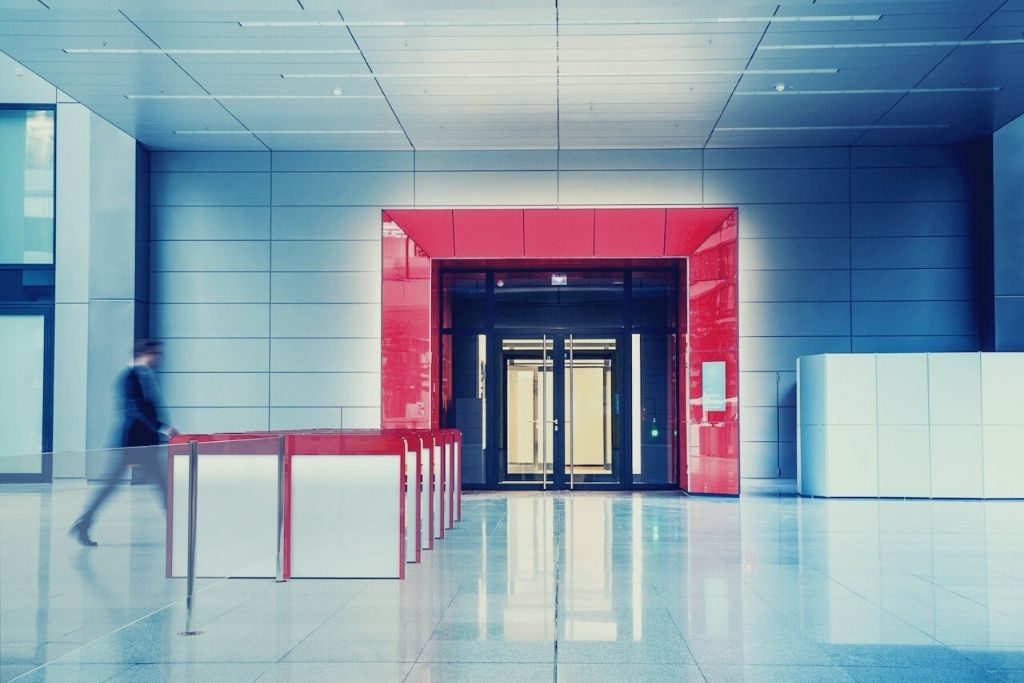When the US supermarket chain Piggly Wiggly opened its doors to customers in the early 20th century, its founder Clarence Saunders worried about overcrowding and mass hysteria. Hence, he installed an entry system to regulate people’s flow to allow only one person at a time. Even though farmers across various civilizations used systems similar to turnstiles for millennia to herd animals, Piggly Wiggly’s entrance solution was the first recorded example of a modern turnstile.
About a century later, particularly in high-flow environments, turnstiles are established as the go-to access solutions. Their global market value is forecast to jump to USD 106 million by 2026, from USD 88 million in 2020.
Considering the following benefits and advantages of turnstiles, no wonder their popularity still keeps growing.
Secure Entrance Control for Bustling Facilities

Thanks to technological advancements, turnstiles today are a far cry from crude metal gates. Built for dependable and long-lasting performance in high volume situations, modern turnstiles monitor, count, and maintain reliable access control.
These features enhance security as they allow to control the number of people who enter and exit a building on presented credentials, and control the direction of the passage.
Turnstiles with electronic access control can work with ID readers and biometric systems. These are even more effective ways to keep the unauthorized patrons out and further elevate security.
Efficient at Access Control
Turnstiles can handle up to 30 people per minute. In buildings where a turnstile is present, members or visitors can simply walk up to the turnstile, present their credentials, and proceed into the building. This not only saves time for visitors but also reduces an important burden of the receptionists.
Depending on the operative needs, access via turnstiles can be further combined with almost every type of credential, including a badge, barcode, QR code, or even cash. Particularly for large or high-flow facilities such as offices, libraries, or stadiums, turnstiles are still considered the most efficient method to regulate access.
Whether it’s an airport gate that can scan a boarding pass, or a public restroom accessible with a coin, turnstiles are the right access solutions to optimize an intense people flow.

Modern Turnstiles Facilitate Data-Drivenness
The ability of modern turnstiles to combine credentials with payment methods, as well as to monitor and limit access also makes them a powerful tool to tap into data.
Data collected by turnstiles about the visitor profile or behavior can empower facility managers to make better business decisions. For example, turnstiles can conveniently reveal the peak hours or average time spent on an activity. Thus, they can help facility managers and executives to understand and analyze their customer behavior and improve their goods and services.
Turnstile Designs Deter Crime
While installing turnstiles might feel a counter-intuitive design choice for some architects, the modern ones offer targeted design solutions.
Thus, an aesthetically appealing turnstile is no longer an oxymoron: It’s possible to customize modern turnstiles with a wide range of materials, housings, and finishes to complement the design brief without compromising security.

Nevertheless, turnstiles still act as a visual deterrent for potential threats. Even when they look more attractive, they’re still a tangible reminder for anyone with criminal intentions that the facility is protected and off-the-limits for them.
The same also applies to environments where one might need to walk the extra mile to enhance security. Floor-to-ceiling turnstiles — also known as full-height turnstiles — make high-risk or sensitive facilities virtually impenetrable.
While they’ve been around for a long time, turnstiles keep evolving to cater to the needs of modern customers and businesses. As they become smarter and more connected, there’s no doubt they’re better poised than ever to facilitate secure and convenient access control in high-flow environments.






